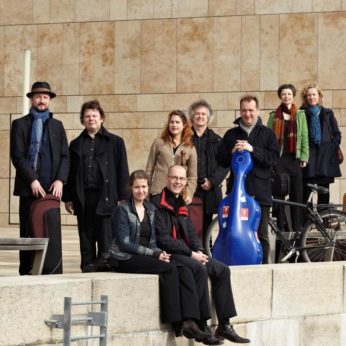Composer: Antonio Vivaldi (b. 1678 - d. 1741)
Performance date: 09/07/2016
Venue: St. Brendan’s Church
Composition Year: after 1716
Duration: 00:10:59
Recording Engineer: Richard McCullough, RTÉ lyric fm
Instrumentation Category:Baroque Ensemble
Instrumentation Other: 3vn, va, vc, db, thb, hpd
Artists:
Bantry Baroque (Catriona O' Mahony, Aingeala de Burca [violins], Norah O' Leary [cello], Kaisamaija Uljas [theorbo]) -
[baroque ensemble]
Concerto Copenhagen (Antoine Toruncyzk [oboe], Fredrik From, Peter Spissky, Antina Hugosson [violins], Torbjörn Köhl [viola], Judith-Maria Blomsterberg [cello], Kate Hearne [cello, recorder], Marrias Frostenson [bass], Fredrik Bock [theorbo], Marcus Mohlin [harpsichord]) -
[baroque ensemble]
Maria Keohane -
[soprano]

The
German violinist Georg Pisendel was 29 when he visited Venice in April 1716 in
the entourage of the Electoral Prince of Saxony Friedrich August. At this time
he was a brilliant violinist in the Dresden orchestra, but would not be
Concertmaster for another dozen years. So it must have been inspirational for
him to meet Vivaldi, nine years his senior and internationally famous since the
publication of L’estro armonico in
1711. Pisendel and Vivaldi became good friends and Pisendel was able to copy
out a large number of Vivaldi’s works and was even given several autograph
manuscripts. At least six of Vivaldi’s violin concertos including this G major
Concerto as well as several sonatas were dedicated to the Saxon violinist.
Pisendel
became the most influential German violinist of his time and the dedicatee of
works by Albinoni and Telemann. It is even thought by some that the great Bach
may have written his Sonatas and Partitas for unaccompanied violin for
Pisendel; they had known each other since 1709. Pisendel’s leading role in the
Dresden orchestra ensured the success of Vivaldi’s music in Saxony. The
violinist and composer continued to remain in touch with each other after Pisendel
returned home. The result is that many Vivaldi concertos and sonatas survive in
manuscript in the Dresden Saxony Landesbibliothek. Today’s G major Concerto
survives in both the Dresden and Turin manuscripts, which may explain the
confusing existence of two different slow movements as Pisendel was not above
revising the originals.
Copyright © 2025 West Cork Music. All rights reserved.
Designed and developed by Matrix Internet